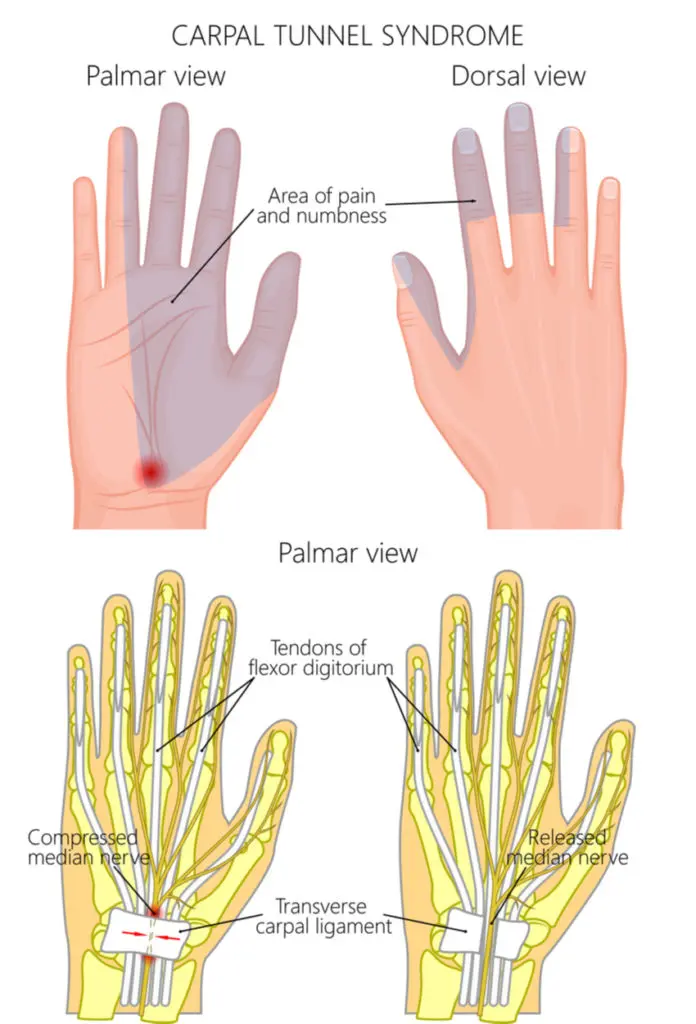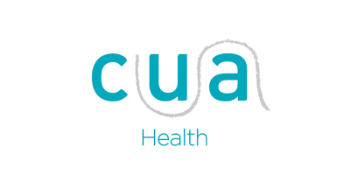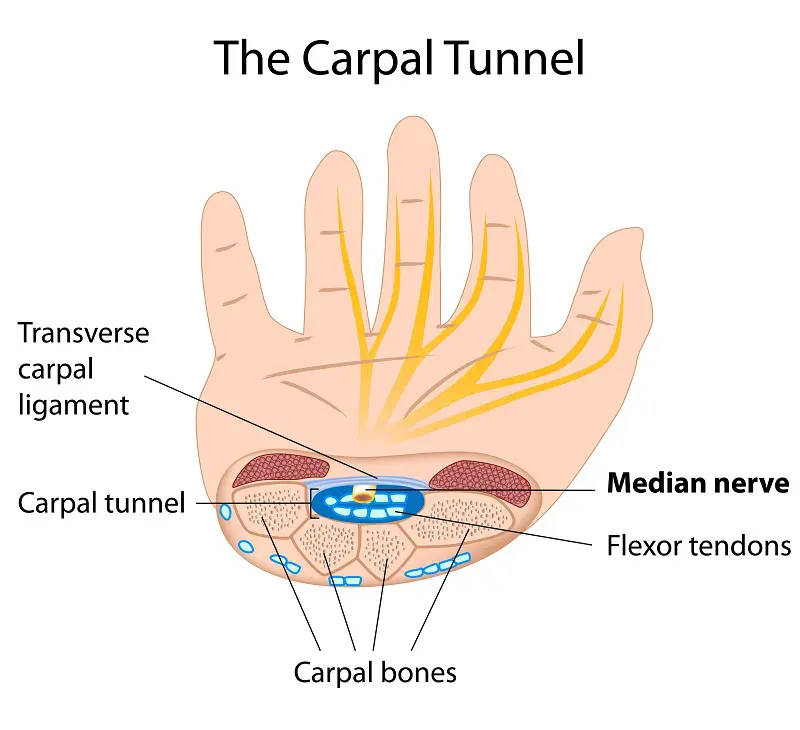
Written by Roger Morelli, Myotherapist
Carpal Tunnel Syndrome is a debilitating RSI (nerve entrapment) of the arm. It is the most diagnosed neuropathy of the upper body. Work tasks and posture are often the primary causes of Carpal Tunnel – however symptoms may also be caused by thoracic outlet syndrome (compression of nerves at the shoulder), pregnancy and diabetes.
Knead Myotherapy can assess the causes of your carpal tunnel pain and provide a rapid solution to symptoms – using the latest scientifically validated methods including:
- Low Level Laser
- Electro Dry needling
- Nerve Mobilisation Techniques
- Expert Arm, Neck and Shoulder Massage
- Joint Mobilisations
- Movement strategies designed to stop pain and improve nerve health
- Ergonomics Advice
Many clinicians focus only on the arm and wrist. This is a mistake and leads to you endlessly paying for treatments. The majority of carpal tunnel syndromes involve the spine and shoulder. Only focusing on the forearm, means you are only treating 30% of the problem.
In too much pain to read the whole article? Hit the book now button and resolve your pain with Expert Myotherapy.
Don't let carpal tunnel syndrome slow you down!
What’s carpal tunnel syndrome?
- The carpal tunnel is an access point in the wrist for nerves and blood vessels – an analogy might be a small conduit space for electrical cables to pass through a wall.
- The median nerve provides sensation to the palm side of your thumb and fingers, and allows the brain to activate the muscles that permit manual activity of the hand.
- The MEDIAN NERVE passes through this space. Carpal tunnel syndrome is largely caused by compression on the median nerve by swollen tendons and muscular structures – BUT THIS IS NOT THE WHOLE STORY.
- Restriction in the carpal tunnel can be caused by swelling in the tendons of the forearm, muscular compression in the forearm, restriction of the nerve at the shoulder and spine – (particularly the neck and upper back).
- Impingement and restriction of the nerve may cause many unpleasant sensations including – pain, tingling, numbness, weakness, loss of sensitivity, hyper sensitivity and a feeling of “swelling”
What carpal tunnel feels like?
Compression of the median nerve or compression at the shoulder (brachial plexus) may cause many unpleasant sensations associated with carpal tunnel including:
- Tingling
- Numbness
- Pain
- Weakness
- A loss of sensitivity
- An increase in sensitivity
- A feeling of swelling
These sensations can often be increased or decreased with postitional variation, such as driving or tool use.
Night pain is a common feature of severe Carpal Tunnel. Symptoms usually worsen because we often sleep on our side and compress the nerves further, reducing circulation also in a slightly curled position, but also because the muscles are not pumping fluid through the structures, this leads to more swelling in the arms than when we are moving.
How carpal tunnel syndrome happens?
- If a structure compresses the median nerve in the carpal space may lead to Carpal Tunnel Syndrome and sharp pain in the wrist.
- Postural factors that affect the neck and upper back can restrict the length/tension relationship of the nerves that give sensation and motor control to the hand. Neck and shoulder pain are usually a significant part in the development of Carpal Tunnel Syndrome.
- Apart from Repetitive Strain Injuries – common causes may include swelling from rheumatoid arthritis and wrist fractures – which decrease the size of the CarpalTunnel.
- Pregnancy alters the fluid balance of the body and may lead to swelling and compression of the Carpal Tunnel.
Book your carpal tunnel treatment here
What are the Risk Factors of Carpal Tunnel Syndrome?
- Workplace factors such as constant computer use, vibrating tools driving or repetitive flexing of the wrist can compress the median nerve
- People with smaller wrists/carpal tunnels are more likely to develop Carpal Tunnel Syndrome (higher incidence in females).
- Excess weight can be a significant risk factor for compression at the carpal tunnel.
- Acute injury such as dislocation or fracture of the wrist can reduce the carpal space and put pressure on the median nerve – causing shooting pain in the wrist joint.
- Rheumatoid Arthritis can deform the bones of the carpal tunnel resulting in compression of the nerve.
Can carpal tunnel cured without surgery?
Even carpal tunnel that has been present for multiple years can be resolved without surgery.
Surgery should only be a last resort. If you haven’t tried Myotherapy, you should not even consider surgery – as hand weakness is a common side effect of carpal tunnel release. Treating the nerve from where it exits the spine, all the way to the thumb and learning how to take your symptoms away yourself should be your FIRST priority.
An expert carpal tunnel treatment from a qualified Myotherapist will involve:
- An assessment to find out which structures are causing your symptoms and which movements you can do to reduce symptoms yourself
- Electro dry needling to improve nerve signalling and change the type of inflammation in the nerve
- Low Level laser to reduce pain and improve cellular energy in the nerve (more effective healing)
- Expert Carpal Tunnel Massage of the neck, back, shoulder and arm
- Effective nerve mobilisation techniques to reduce symptoms
What shouldn’t you do if you have carpal tunnel syndrome?
- Do not focus only on the arm and wrist. The majority of carpal tunnel syndromes begin at the spine and upper arm. Only focusing on the arm, means you are only treating 30% of the problem.
- Don’t endlessly use cortisone injections. Cortisone can be a very effective tool for many pain states, but if your symptoms are caused or increased by structures above the wrist and forearm – it’s not going to help for long.
- Don’t stop moving – muscular activation is important to stop swelling, walking, swimming and various exercises that don’t require grip can help you overcome your pain.
- Don’t consider surgery before trying Myotherapy. You will know immediately if Myotherapy is going to work for you.
What should you do about carpal tunnel?
- Get an assessment immediately. The longer that the nerves are irritable, the higher the likelihood of damage leading to symptoms that don’t resolve.
- Keep moving
- Where possible, avoid provocative actions
- Improve ergonomics – computer postures often have a large role in the development of CTS.
- Strengthening the upper back – an expert clinician will show you how to improve your bodies resilience without exacerbating symptoms.
FAQs
- Rheumatoid Arthritis can deform the bones of the carpal tunnel resulting in compression of the nerve.
- The carpal tunnel is an access point in the wrist for nerves and blood.
- The median nerve passes through this space. Carpal tunnel syndrome is largely caused by compression on the median nerve by swollen tendons and muscular
A chronic RSI such as Carpal tunnel is usually caused by multiple factors including neck joint dysfunction, shoulder restriction and swelling in the arm. Tendon irritation such as Tennis can affect swelling in the forearm and increase carpal tunnel symptoms.
That depends on the individual and their tolerance to injections. A cortisone injection into the carpal tunnel is not an inherently painful procedure, but if someones symptoms are severe, it may increase the pain.
Many clinicians focus only on the arm and wrist. This is a mistake. The majority of carpal tunnel syndromes involve the spine and shoulder. Only focusing on the forearm, means you are only treating 30% of the problem.
Severe carpal tunnel symptoms can be constant. However the majority of Carpal Tunnel Syndrome symptoms should be modifiable by positional change.
Compression of the median nerve or compression at the shoulder (brachial plexus) may cause many unpleasant sensations associated with carpal tunnel including:
- Tingling
- Numbness
- Pain
- Weakness
- A loss of sensitivity
- An increase in sensitivity
- A feeling of swelling
Night pain is a common feature of severe Carpal Tunnel. Symptoms usually worsen because we often sleep on our side and compress the nerves further, reducing circulation also in a slightly curled position, but also because the muscles are not pumping fluid through the structures, this leads to more swelling in the arms than when we are moving
Absolutely yes. Commonly carpal tunnel starts in the neck and shoulder from repetitive tasks and postures that lead to nerve compression.
Compression of the median nerve or compression at the shoulder (brachial plexus) may cause many unpleasant sensations in the arm, elbow, fingers, wrist and thumb. Symptoms associated with carpal tunnel are:
- Tingling
- Numbness
- Pain
- Weakness
- A loss of sensitivity
- An increase in sensitivity
- A feeling of swelling
Absolutely yes. Commonly carpal tunnel starts in the neck and shoulder from repetitive tasks and postures that lead to nerve compression.
Compression of the median nerve or compression at the shoulder (brachial plexus) may cause many unpleasant sensations in the arm, elbow, fingers, wrist and thumb. Symptoms associated with carpal tunnel are:
- Tingling
- Numbness
- Pain
- Weakness
- A loss of sensitivity
- An increase in sensitivity
- A feeling of swelling
Absolutely yes. Commonly carpal tunnel starts in the neck and shoulder from repetitive tasks and postures that lead to nerve compression.
Compression of the median nerve or compression at the shoulder (brachial plexus) may cause many unpleasant sensations in the arm, elbow, fingers, wrist and thumb. Symptoms associated with carpal tunnel are:
- Tingling
- Numbness
- Pain
- Weakness
- A loss of sensitivity
- An increase in sensitivity
- A feeling of swelling
Absolutely yes. Commonly carpal tunnel starts in the neck and shoulder from repetitive tasks and postures that lead to nerve compression.
Compression of the median nerve or compression at the shoulder (brachial plexus) may cause many unpleasant sensations in the arm, elbow, fingers, wrist and thumb. Symptoms associated with carpal tunnel are:
- Tingling
- Numbness
- Pain
- Weakness
- A loss of sensitivity
- An increase in sensitivity
- A feeling of swelling
Absolutely yes. Carpal Tunnel is usually modifiable with position and movement. Some positions such as driving or tool use will aggravate symptoms. An expert carpal tunnel treatment will involve your Myotherapist determining where your carpal tunnel symptoms originate, and showing you a nerve mobilisation that immediately reduces symptoms.
Even carpal tunnel that has been present for multiple years can be resolved without surgery.
Surgery should only be a last resort. If you haven’t tried Myotherapy, you should not even consider surgery – as hand weakness is a common side effect of carpal tunnel release. Treating the nerve from where it exits the spine, all the way to the thumb and learning how to take your symptoms away yourself should be your first priority.
An expert carpal tunnel treatment from a qualified Myotherapist will involve:
- An assessment to find out which structures are causing your symptoms and which movements you can do to reduce symptoms yourself
- Electro dry needling to improve nerve signalling and change the type of inflammation in the nerve
- Low Level laser to reduce pain and improve cellular energy in the nerve (more effective healing)
- Expert Carpal Tunnel Massage of the neck, back, shoulder and arm
- Effective nerve mobilisation techniques to reduce symptoms
Even carpal tunnel that has been present for multiple years can be resolved without surgery.
Treating the nerve from where it exits the spine, all the way to the thumb and learning how to take your symptoms away yourself should be your first priority.
An expert carpal tunnel treatment from a qualified Myotherapist will involve:
- An assessment to find out which structures are causing your symptoms and which movements you can do to reduce symptoms yourself
- Electro dry needling to improve nerve signalling and change the type of inflammation in the nerve
- Low Level laser to reduce pain and improve cellular energy in the nerve (more effective healing)
- Expert Carpal Tunnel Massage of the neck, back, shoulder and arm
- Effective nerve mobilisation techniques to reduce symptoms
Carpal tunnel surgery typically involves cutting a tendon in the wrist that creates space in the carpal tunnel passage. Many carpal tunnel syndromes begin at the spine and upper arm. Only focusing on the wrist, means you are only treating 30% of the problem and you increase the risk of symptoms returning.
Carpal tunnel surgery typically involves cutting a tendon in the wrist that creates space in the carpal tunnel passage. Many carpal tunnel syndromes begin at the spine and upper arm. Only focusing on the wrist, means you are only treating 30% of the problem and you increase the risk of symptoms returning.
Even carpal tunnel that has been present for multiple years can be resolved without surgery.
Treating the nerve from where it exits the spine, all the way to the thumb and learning how to take your symptoms away yourself should be your first priority.
An expert carpal tunnel treatment from a qualified Myotherapist will involve:
- An assessment to find out which structures are causing your symptoms and which movements you can do to reduce symptoms yourself
- Electro dry needling to improve nerve signalling and change the type of inflammation in the nerve
- Low Level laser to reduce pain and improve cellular energy in the nerve (more effective healing)
- Expert Carpal Tunnel Massage of the neck, back, shoulder and arm
- Effective nerve mobilisation techniques to reduce symptoms
Yes. Carpal tunnel is a type of RSI (repetitive Strain Injury) that is usually associated with work or recreational activities that involve repetition, such as typing, console gaming, tool use, driving and grip tasks. Postural factors and restriction in the neck and shoulder are usually involved with the onset of symptoms.
- Rheumatoid Arthritis can deform the bones of the carpal tunnel resulting in compression of the nerve.
- The carpal tunnel is an access point in the wrist for nerves and blood.
- The median nerve passes through this space. Carpal tunnel syndrome is largely caused by compression on the median nerve by swollen tendons and muscular
Diabetes increases your risk of carpal tunnel (or carpal tunnel like symptoms) for several reasons:
- Severe diabetes can lead to nerve damage in the extremities
- Carpal tunnel Syndrome is more likely if you have extra weight
- Endocrine dysfunction associated with diabetes can cause thyroid problems and increase swelling – Carpal Tunnel Syndrome is largely a result of tissues swelling and compressing the nerves in the arm.
- A high percentage of Type 2 diabetics are sedentary – leading to more swelling and inflammation in the body and arms.
Carpal tunnel is relatively common during pregnancy as a result of postural change, fluid retention/swelling and a rapid increase in weight. The swelling and increase in body mass can compress the nerves in the arm starting at the neck and shoulder and reduce the nerves ability to move creating symptoms. Local swelling in the wrist can compress the median nerve in the carpal tunnel itself. There is strong evidence to suggest nerve glides can greatly assist in reducing these symptoms.
Postural factors such as driving, typing and tool use are commonly part of the onset of Carpal tunnel symptoms. The majority of CTS start at the neck and upper back – as these structures can restrict the length/tension relationship of the nerves that give sensation and motor control to the hand. Neck and shoulder pain are usually a significant part in the development of Carpal Tunnel Syndrome.
The majority of carpal tunnel can be cured – unless your symptoms have been ongoing for so long that you have nerve damage, or a condition such as diabetes has not caused neuropathy.
Treating the nerve from where it exits the spine, all the way to the thumb and learning how to take your symptoms away yourself should be your first priority.
An expert carpal tunnel treatment from a qualified Myotherapist will involve:
- An assessment to find out which structures are causing your symptoms and which movements you can do to reduce symptoms yourself
- Electro dry needling to improve nerve signalling and change the type of inflammation in the nerve
- Low Level laser to reduce pain and improve cellular energy in the nerve (more effective healing)
- Expert Carpal Tunnel Massage of the neck, back, shoulder and arm
- Effective nerve mobilisation techniques to reduce symptoms
A qualified clinician will use special tests to determine the mobility and sensitivity of the nerve pathway.
Compression of the median nerve or compression at the shoulder (brachial plexus) may cause many unpleasant sensations associated with carpal tunnel including:
- Tingling
- Numbness
- Pain
- Weakness
- A loss of sensitivity
- An increase in sensitivity
- A feeling of swelling
These sensations can often be increased or decreased with postitional variation, such as driving or tool use.
Night pain is a common feature of severe Carpal Tunnel. Symptoms usually worsen because we often sleep on our side and compress the nerves further, reducing circulation also in a slightly curled position, but also because the muscles are not pumping fluid through the structures, this leads to more swelling in the arms than when we are moving.
It is likely the shoulder has led to the onset of carpal tunnel.
Postural factors such as driving, typing and tool use are commonly part of the onset of Carpal tunnel symptoms. The majority of CTS start at the neck and upper back – as these structures can restrict the length/tension relationship of the nerves that give sensation and motor control to the hand. Neck and shoulder pain are usually a significant part in the development of Carpal Tunnel Syndrome.
Postural factors such as driving, typing and tool use are commonly part of the onset of Carpal tunnel symptoms. The majority of CTS start at the neck and upper back – as these structures can restrict the length/tension relationship of the nerves that give sensation and motor control to the hand. Neck and shoulder pain are usually a significant part in the development of Carpal Tunnel Syndrome.
It is unlikely to disappear without treatment.
The majority of carpal tunnel can be cured – unless your symptoms have been ongoing for so long that you have nerve damage, or a condition such as diabetes has not caused neuropathy.
Treating the nerve from where it exits the spine, all the way to the thumb and learning how to take your symptoms away yourself should be your first priority.
An expert carpal tunnel treatment from a qualified Myotherapist will involve:
- An assessment to find out which structures are causing your symptoms and which movements you can do to reduce symptoms yourself
- Electro dry needling to improve nerve signalling and change the type of inflammation in the nerve
- Low Level laser to reduce pain and improve cellular energy in the nerve (more effective healing)
- Expert Carpal Tunnel Massage of the neck, back, shoulder and arm
- Effective nerve mobilisation techniques to reduce symptoms
Carpal tunnel surgery typically involves cutting a tendon in the wrist that creates space in the carpal tunnel passage. Many carpal tunnel syndromes begin at the spine and upper arm. Only focusing on the wrist, means you are only treating 30% of the problem and you increase the risk of symptoms returning.
Permanent nerve damage and increasing symptom severity. This can lead to problems performing work tasks, exercises and health changes such as weight gain, depression and financial stress.
Early treatment improves outcomes drastically, but even multi-year Carpal Tunnel can respond well to clinical intervention.
The majority of carpal tunnel can be cured – unless your symptoms have been ongoing for so long that you have nerve damage, or a condition such as diabetes has not caused neuropathy.
Treating the nerve from where it exits the spine, all the way to the thumb and learning how to take your symptoms away yourself should be your first priority.
An expert carpal tunnel treatment from a qualified Myotherapist will involve:
- An assessment to find out which structures are causing your symptoms and which movements you can do to reduce symptoms yourself
- Electro dry needling to improve nerve signalling and change the type of inflammation in the nerve
- Low Level laser to reduce pain and improve cellular energy in the nerve (more effective healing)
- Expert Carpal Tunnel Massage of the neck, back, shoulder and arm
- Effective nerve mobilisation techniques to reduce symptoms
There are numerous surgeons that perform carpal tunnel release.
Surgery should only be a last resort. If you haven’t tried Myotherapy, you should not even consider surgery – as hand weakness is a common side effect of carpal tunnel release. Treating the nerve from where it exits the spine, all the way to the thumb and learning how to take your symptoms away yourself should be your first priority.
Carpal tunnel is relatively common during pregnancy as a result of postural change, fluid retention/swelling and a rapid increase in weight. The swelling and increase in body mass can compress the nerves in the arm starting at the neck and shoulder and reduce the nerves ability to move creating symptoms. Local swelling in the wrist can compress the median nerve in the carpal tunnel itself. There is strong evidence to suggest nerve glides can greatly assist in reducing these symptoms.
One of the most common symptoms of Carpal Tunnel is pain and numbness/tingling at the wrist and weakness. Carpal tunnel usually involves nerve restriction from the neck, shoulder and arm. Do not focus only on the arm and wrist. The majority of carpal tunnel syndromes begin at the spine and upper arm. Only focusing on the arm, means you are only treating 30% of the problem.
An expert carpal tunnel treatment from a qualified Myotherapist will involve:
- An assessment to find out which structures are causing your symptoms and which movements you can do to reduce symptoms yourself
- Electro dry needling to improve nerve signalling and change the type of inflammation in the nerve
- Low Level laser to reduce pain and improve cellular energy in the nerve (more effective healing)
- Expert Carpal Tunnel Massage of the neck, back, shoulder and arm
- Effective nerve mobilisation techniques to reduce symptoms
Compression of the median nerve or compression at the shoulder (brachial plexus) may cause many unpleasant sensations associated with carpal tunnel including:
- Tingling
- Numbness
- Pain
- Weakness
- A loss of sensitivity
- An increase in sensitivity
- A feeling of swelling
These sensations can often be increased or decreased with postitional variation, such as driving or tool use.
Night pain is a common feature of severe Carpal Tunnel. Symptoms usually worsen because we often sleep on our side and compress the nerves further, reducing circulation also in a slightly curled position, but also because the muscles are not pumping fluid through the structures, this leads to more swelling in the arms than when we are moving.
Get an assessment immediately to find out the origins of your pain (neck, upper back, shoulder, elbow, forearm or wrist).
Compression of the median nerve or compression at the shoulder (brachial plexus) may cause many unpleasant sensations associated with carpal tunnel including:
- Tingling
- Numbness
- Pain
- Weakness
- A loss of sensitivity
- An increase in sensitivity
- A feeling of swelling
These sensations can often be increased or decreased with postitional variation, such as driving or tool use.
Night pain is a common feature of severe Carpal Tunnel. Symptoms usually worsen because we often sleep on our side and compress the nerves further, reducing circulation also in a slightly curled position, but also because the muscles are not pumping fluid through the structures, this leads to more swelling in the arms than when we are moving.
The equivalent nerve compression that occurs at the elbow is called Ulnar tunnel syndrome and creates pain at the elbow and arm symptoms including:
- Tingling
- Numbness
- Pain
- Weakness
- A loss of sensitivity
- An increase in sensitivity
- A feeling of swelling
These sensations can often be increased or decreased with postitional variation, such as driving or tool use.
Do not lean on the elbow when driving or at a desk and get a clinical assessment immediately.
An expert Carpal Tunnel Massage will involve assessing your symptoms to determine where your carpal tunnel originates. The majority of CTS will involve nerve restriction in the neck, upper back, shoulder, elbow and forearm. At Knead Massage our Clinical Myotherapists are degree qualified with years of experience treating chronic RSI’s of the wrist and arm. An expert carpal tunnel massage will also involve your therapist showing you a nerve mobility exercise that lets you take your symptoms away yourself.
The equivalent nerve compression that occurs at the elbow is called Ulnar tunnel syndrome and creates pain at the elbow and arm symptoms including:
- Tingling
- Numbness
- Pain
- Weakness
- A loss of sensitivity
- An increase in sensitivity
- A feeling of swelling
These sensations can often be increased or decreased with postitional variation, such as driving or tool use.
Do not lean on the elbow when driving or at a desk and get a clinical assessment immediately.
Tingling, numbness and pain in the thumb are common symptoms of carpal tunnel syndrome.
The majority of carpal tunnel syndromes begin at the spine and upper arm. Only focusing on the arm, means you are only treating 30% of the problem.
Carpal tunnel is a type of RSI (Repetitive Strain Injury) that is usually associated with work or recreational activities that involve repetition, such as typing, console gaming, tool use, driving and grip tasks. Postural factors and restriction in the neck and shoulder are usually involved with the onset of symptoms.
If you have any arm pain symptoms you chould get a clinical assessment to understand the cause of your pain.
Typical carpal tunnel symptoms include:
- Tingling
- Numbness
- Pain
- Weakness
- A loss of sensitivity
- An increase in sensitivity
- A feeling of swelling
These sensations can often be increased or decreased with postitional variation, such as driving or tool use.
Night pain is a common feature of severe Carpal Tunnel. Symptoms usually worsen because we often sleep on our side and compress the nerves further, reducing circulation also in a slightly curled position, but also because the muscles are not pumping fluid through the structures, this leads to more swelling in the arms than when we are moving.
Tendon swelling can cause carpal tunnel syndrome. However arm pain without nerve symptoms is more likely to be a tendon irritation – the exercise protocol to treat these conditions is very different. Getting a proper clinical assessment is essential.
Typical Carpal Tunnel symptoms include:
- Tingling
- Numbness
- Pain
- Weakness
- A loss of sensitivity
- An increase in sensitivity
- A feeling of swelling
These sensations can often be increased or decreased with postitional variation, such as driving or tool use.
Night pain is a common feature of severe Carpal Tunnel. Symptoms usually worsen because we often sleep on our side and compress the nerves further, reducing circulation also in a slightly curled position, but also because the muscles are not pumping fluid through the structures, this leads to more swelling in the arms than when we are moving.
Tendon swelling can cause carpal tunnel syndrome. However arm pain without nerve symptoms is more likely to be a tendon irritation such as tennis elbow – the exercise protocol to treat these conditions is very different. Getting a proper clinical assessment is essential.
Typical Carpal Tunnel symptoms include:
- Tingling
- Numbness
- Pain
- Weakness
- A loss of sensitivity
- An increase in sensitivity
- A feeling of swelling
These sensations can often be increased or decreased with postitional variation, such as driving or tool use.
Night pain is a common feature of severe Carpal Tunnel. Symptoms usually worsen because we often sleep on our side and compress the nerves further, reducing circulation also in a slightly curled position, but also because the muscles are not pumping fluid through the structures, this leads to more swelling in the arms than when we are moving.
Even carpal tunnel that has been present for multiple years can be resolved without surgery.
Surgery should only be a last resort. If you haven’t tried Myotherapy, you should not even consider surgery – as hand weakness is a common side effect of carpal tunnel release. Treating the nerve from where it exits the spine, all the way to the thumb and learning how to take your symptoms away yourself should be your first priority.
An expert carpal tunnel treatment from a qualified Myotherapist will involve:
- An assessment to find out which structures are causing your symptoms and which movements you can do to reduce symptoms yourself
- Electro dry needling to improve nerve signalling and change the type of inflammation in the nerve
- Low Level laser to reduce pain and improve cellular energy in the nerve (more effective healing)
- Expert Carpal Tunnel Massage of the neck, back, shoulder and arm
- Effective nerve mobilisation techniques to reduce symptoms
- Rheumatoid Arthritis can deform the bones of the carpal tunnel resulting in compression of the nerve.
- The carpal tunnel is an access point in the wrist for nerves and blood.
The median nerve passes through this space. Carpal tunnel syndrome is largely caused by compression on the median nerve by swollen tendons and muscular
Do not focus only on the arm and wrist. The majority of Carpal tunnel syndromes start in the neck, upper back, shoulder and arm. Elbow conditions such as golfer elbow and tennis elbow can increase swelling in the arms exacerbating carpal tunnel syndromes.
The longer you have carpal tunnel the more likely you are to cause permanent nerve damage. Other conditions such as diabetes can also damage the peripheral nerves of the arm causing carpal tunnel like symptoms. If you have arm symptoms get an expert carpal tunnel massage immediately.
Carpal tunnel is relatively common during pregnancy as a result of postural change, fluid retention/swelling and a rapid increase in weight. The swelling and increase in body mass can compress the nerves in the arm starting at the neck and shoulder and reduce the nerves ability to move creating symptoms. Local swelling in the wrist can compress the median nerve in the carpal tunnel itself. There is strong evidence to suggest nerve glides can greatly assist in reducing these symptoms.
Commonly carpal tunnel starts in the neck and shoulder from repetitive tasks and postures that lead to nerve compression.
Compression of the median nerve or compression at the shoulder (brachial plexus) may cause many unpleasant sensations in the arm, elbow, fingers, wrist and thumb. Symptoms associated with carpal tunnel are:
- Tingling
- Numbness
- Pain
- Weakness
- A loss of sensitivity
- An increase in sensitivity
- A feeling of swelling
- The thumb and 1st two digits are common locations of nerve symptoms and pain in carpal tunnel syndrome.
- The median nerve provides sensation to the palm side of your thumb and fingers, and allows the brain to activate the muscles that permit manual activity of the hand.
- Impingement and restriction of the nerve may cause many unpleasant sensations including – pain, tingling, numbness, weakness, loss of sensitivity, hyper sensitivity and a feeling of “swelling”
If you have diabetes you should discuss this with your GP immediately. Peripheral neuropathy can mimic carpal tunnel.
Sensations associated with carpal tunnel including:
- Tingling
- Numbness
- Pain
- Weakness
- A loss of sensitivity
- An increase in sensitivity
- A feeling of swelling
These sensations can often be increased or decreased with postitional variation, such as driving or tool use.
A qualified clinician will use special tests to determine the mobility and sensitivity of the nerve pathway.
Night pain is a common feature of severe Carpal Tunnel. Symptoms usually worsen because we often sleep on our side and compress the nerves further, reducing circulation also in a slightly curled position, but also because the muscles are not pumping fluid through the structures, this leads to more swelling in the arms than when we are moving.
Compression of the median nerve or compression at the shoulder (brachial plexus) may cause many unpleasant sensations associated with carpal tunnel including:
- Tingling
- Numbness
- Pain
- Weakness
- A loss of sensitivity
- An increase in sensitivity
- A feeling of swelling
These sensations can often be increased or decreased with postitional variation, such as driving or tool use.
Night pain is a common feature of severe Carpal Tunnel. Symptoms usually worsen because we often sleep on our side and compress the nerves further, reducing circulation also in a slightly curled position, but also because the muscles are not pumping fluid through the structures, this leads to more swelling in the arms than when we are moving.
- If a structure compresses the median nerve in the carpal space, this may lead to Carpal Tunnel Syndrome (tingling, numbness, weakness) and sharp pain in the wrist.
- Postural factors that affect the neck and upper back can restrict the length/tension relationship of the nerves that give sensation and motor control to the hand. Neck and shoulder pain are usually a significant part in the development of Carpal Tunnel Syndrome. Workplace factors such as constant computer use, vibrating tools driving or repetitive flexing of the wrist can compress the median nerve
- People with smaller wrists/carpal tunnels are more likely to develop Carpal Tunnel Syndrome (higher incidence in females).
- Excess weight can be a significant risk factor for compression at the carpal tunnel.
A qualified clinician will use special tests to determine the mobility and sensitivity of the nerve pathway.
Compression of the median nerve or compression at the shoulder (brachial plexus) may cause many unpleasant sensations associated with carpal tunnel including:
- Tingling
- Numbness
- Pain
- Weakness
- A loss of sensitivity
- An increase in sensitivity
- A feeling of swelling
These sensations can often be increased or decreased with postitional variation, such as driving or tool use.
Night pain is a common feature of severe Carpal Tunnel. Symptoms usually worsen because we often sleep on our side and compress the nerves further, reducing circulation also in a slightly curled position, but also because the muscles are not pumping fluid through the structures, this leads to more swelling in the arms than when we are moving.
An expert carpal tunnel treatment from a qualified Myotherapist will involve:
- An assessment to find out which structures are causing your symptoms and which movements you can do to reduce symptoms yourself
- Electro dry needling to improve nerve signalling and change the type of inflammation in the nerve
- Low Level laser to reduce pain and improve cellular energy in the nerve (more effective healing)
- Expert Carpal Tunnel Massage of the neck, back, shoulder and arm
- Effective nerve mobilisation techniques to reduce symptoms
- If a structure compresses the median nerve in the carpal space, this may lead to Carpal Tunnel Syndrome (tingling, numbness, weakness) and sharp pain in the wrist.
- Postural factors that affect the neck and upper back can restrict the length/tension relationship of the nerves that give sensation and motor control to the hand. Neck and shoulder pain are usually a significant part in the development of Carpal Tunnel Syndrome. Workplace factors such as constant computer use, vibrating tools driving or repetitive flexing of the wrist can compress the median nerve
- People with smaller wrists/carpal tunnels are more likely to develop Carpal Tunnel Syndrome (higher incidence in females).
- Excess weight can be a significant risk factor for compression at the carpal tunnel.
- If a structure compresses the median nerve in the carpal space, this may lead to Carpal Tunnel Syndrome (tingling, numbness, weakness) and sharp pain in the wrist.
- Postural factors that affect the neck and upper back can restrict the length/tension relationship of the nerves that give sensation and motor control to the hand. Neck and shoulder pain are usually a significant part in the development of Carpal Tunnel Syndrome. Workplace factors such as constant computer use, vibrating tools driving or repetitive flexing of the wrist can compress the median nerve
- People with smaller wrists/carpal tunnels are more likely to develop Carpal Tunnel Syndrome (higher incidence in females).
- Excess weight can be a significant risk factor for compression at the carpal tunnel.
Compression of the median nerve or compression at the shoulder (brachial plexus) may cause many unpleasant sensations associated with carpal tunnel including:
- Tingling
- Numbness
- Pain
- Weakness
- A loss of sensitivity
- An increase in sensitivity
- A feeling of swelling
These sensations can often be increased or decreased with postitional variation, such as driving or tool use.
Night pain is a common feature of severe Carpal Tunnel. Symptoms usually worsen because we often sleep on our side and compress the nerves further, reducing circulation also in a slightly curled position, but also because the muscles are not pumping fluid through the structures, this leads to more swelling in the arms than when we are moving
- If a structure compresses the median nerve in the carpal space, this may lead to Carpal Tunnel Syndrome (tingling, numbness, weakness) and sharp pain in the wrist.
- Postural factors that affect the neck and upper back can restrict the length/tension relationship of the nerves that give sensation and motor control to the hand. Neck and shoulder pain are usually a significant part in the development of Carpal Tunnel Syndrome. Workplace factors such as constant computer use, vibrating tools driving or repetitive flexing of the wrist can compress the median nerve
- People with smaller wrists/carpal tunnels are more likely to develop Carpal Tunnel Syndrome (higher incidence in females).
- Excess weight can be a significant risk factor for compression at the carpal tunnel.
Compression of the median nerve or compression at the shoulder (brachial plexus) may cause many unpleasant sensations associated with carpal tunnel including:
- Tingling
- Numbness
- Pain
- Weakness
- A loss of sensitivity
- An increase in sensitivity
- A feeling of swelling
These sensations can often be increased or decreased with postitional variation, such as driving or tool use.
Night pain is a common feature of severe Carpal Tunnel. Symptoms usually worsen because we often sleep on our side and compress the nerves further, reducing circulation also in a slightly curled position, but also because the muscles are not pumping fluid through the structures, this leads to more swelling in the arms than when we are moving.
Constant tingling and numbness in the arm thumb and fingers are an indication that your nerve pathway is impinged somewhere between the neck, shoulder, upper arm, forearm and wrist.
Only focusing on the forearm, means you are only treating 30% of the problem.
If you have tried manual therapies to all of these areas and you still have severe symptoms, it is important to get a nerve conduction test from a neurologist.
The majority of carpal tunnel can be cured – unless your symptoms have been ongoing for so long that you have nerve damage, or a condition such as diabetes has not caused neuropathy.
Treating the nerve from where it exits the spine, all the way to the thumb and learning how to take your symptoms away yourself should be your first priority.
An expert carpal tunnel treatment from a qualified Myotherapist will involve:
- An assessment to find out which structures are causing your symptoms and which movements you can do to reduce symptoms yourself
- Electro dry needling to improve nerve signalling and change the type of inflammation in the nerve
- Low Level laser to reduce pain and improve cellular energy in the nerve (more effective healing)
- Expert Carpal Tunnel Massage of the neck, back, shoulder and arm
- Effective nerve mobilisation techniques to reduce symptoms
Carpal tunnel surgery typically involves cutting a tendon in the wrist that creates space in the carpal tunnel passage. Many carpal tunnel syndromes begin at the spine and upper arm. Only focusing on the wrist, means you are only treating 30% of the problem and you increase the risk of symptoms returning.
If expert carpal tunnel massage of the neck back shoulders and arms has also not yielded results, it is likely that you have permanent nerve damage and should consult with a neurologist.
Carpal tunnel surgery typically involves cutting a tendon in the wrist that creates space in the carpal tunnel passage. Many carpal tunnel syndromes begin at the spine and upper arm. Only focusing on the wrist, means you are only treating 30% of the problem and you increase the risk of symptoms returning.
If expert carpal tunnel massage of the neck back shoulders and arms has also not yielded results, it is likely that you have permanent nerve damage and should consult with a neurologist.
During pregnancy the fluid balance of the body becomes more disposed to swelling. This combined with weight gain can lead to compression of the median nerve in the forearm and wrist. There is significant scientific evidence showing that nerve mobilisation exercises will reduce the severity of carpal tunnel symptoms. Expert Carpal Tunnel Massage of the neck, shoulders and arms is also effective at improving pregnancy carpal tunnel symptoms.
Carpal tunnel can become a lifelong condition if left untreated.
Carpal tunnel is a type of RSI that is strongly correlated to postural factors and work tasks such as typing, tool use and driving. Once symptoms start it is important to consult with a clinician to help guide you to a rapid recovery.
An expert carpal tunnel treatment from a qualified Myotherapist will involve:
- An assessment to find out which structures are causing your symptoms and which movements you can do to reduce symptoms yourself
- Electro dry needling to improve nerve signalling and change the type of inflammation in the nerve
- Low Level laser to reduce pain and improve cellular energy in the nerve (more effective healing)
- Expert Carpal Tunnel Massage of the neck, back, shoulder and arm
- Effective nerve mobilisation techniques to reduce symptoms
There are numerous surgeons that perform carpal tunnel release.
Surgery should only be a last resort. If you haven’t tried Myotherapy, you should not even consider surgery – as hand weakness is a common side effect of carpal tunnel release. Treating the nerve from where it exits the spine, all the way to the thumb and learning how to take your symptoms away yourself should be your FIRST priority.
There are numerous surgeons that perform carpal tunnel release.
Surgery should only be a last resort. If you haven’t tried Myotherapy, you should not even consider surgery – as hand weakness is a common side effect of carpal tunnel release. Treating the nerve from where it exits the spine, all the way to the thumb and learning how to take your symptoms away yourself should be your FIRST priority.
There are numerous surgeons that perform carpal tunnel release.
Surgery should only be a last resort. If you haven’t tried Myotherapy, you should not even consider surgery – as hand weakness is a common side effect of carpal tunnel release. Treating the nerve from where it exits the spine, all the way to the thumb and learning how to take your symptoms away yourself should be your FIRST priority.
The majority of carpal tunnel can be cured – unless your symptoms have been ongoing for so long that you have nerve damage, or a condition such as diabetes has not caused neuropathy.
Treating the nerve from where it exits the spine, all the way to the thumb and learning how to take your symptoms away yourself should be your first priority.
An expert carpal tunnel treatment from a qualified Myotherapist will involve:
- An assessment to find out which structures are causing your symptoms and which movements you can do to reduce symptoms yourself
- Electro dry needling to improve nerve signalling and change the type of inflammation in the nerve
- Low Level laser to reduce pain and improve cellular energy in the nerve (more effective healing)
- Expert Carpal Tunnel Massage of the neck, back, shoulder and arm
- Effective nerve mobilisation techniques to reduce symptoms
The majority of carpal tunnel can be cured – unless your symptoms have been ongoing for so long that you have nerve damage, or a condition such as diabetes has not caused neuropathy.
Treating the nerve from where it exits the spine, all the way to the thumb and learning how to take your symptoms away yourself should be your first priority.
An expert carpal tunnel treatment from a qualified Myotherapist will involve:
- An assessment to find out which structures are causing your symptoms and which movements you can do to reduce symptoms yourself
- Electro dry needling to improve nerve signalling and change the type of inflammation in the nerve
- Low Level laser to reduce pain and improve cellular energy in the nerve (more effective healing)
- Expert Carpal Tunnel Massage of the neck, back, shoulder and arm
- Effective nerve mobilisation techniques to reduce symptoms
A qualified Myotherapist will use special tests to determine the mobility and sensitivity of the nerve pathway.
Compression of the median nerve or compression at the shoulder (brachial plexus) may cause many unpleasant sensations associated with carpal tunnel including:
- Tingling
- Numbness
- Pain
- Weakness
- A loss of sensitivity
- An increase in sensitivity
- A feeling of swelling
A qualified Myotherapist will use special tests to determine the mobility and sensitivity of the nerve pathway.
Compression of the median nerve or compression at the shoulder (brachial plexus) may cause many unpleasant sensations associated with carpal tunnel including:
- Tingling
- Numbness
- Pain
- Weakness
- A loss of sensitivity
- An increase in sensitivity
- A feeling of swelling
A qualified Myotherapist will use special tests to determine the mobility and sensitivity of the nerve pathway.
Compression of the median nerve or compression at the shoulder (brachial plexus) may cause many unpleasant sensations associated with carpal tunnel including:
- Tingling
- Numbness
- Pain
- Weakness
- A loss of sensitivity
- An increase in sensitivity
- A feeling of swelling
The majority of carpal tunnel can be cured – unless your symptoms have been ongoing for so long that you have nerve damage, or a condition such as diabetes has not caused neuropathy.
Treating the nerve from where it exits the spine, all the way to the thumb and learning how to take your symptoms away yourself should be your first priority.
An expert carpal tunnel treatment from a qualified Myotherapist will involve:
- An assessment to find out which structures are causing your symptoms and which movements you can do to reduce symptoms yourself
- Electro dry needling to improve nerve signalling and change the type of inflammation in the nerve
- Low Level laser to reduce pain and improve cellular energy in the nerve (more effective healing)
- Expert Carpal Tunnel Massage of the neck, back, shoulder and arm
- Effective nerve mobilisation techniques to reduce symptoms
The majority of carpal tunnel can be cured – unless your symptoms have been ongoing for so long that you have nerve damage, or a condition such as diabetes has not caused neuropathy.
Treating the nerve from where it exits the spine, all the way to the thumb and learning how to take your symptoms away yourself should be your first priority.
An expert carpal tunnel treatment from a qualified Myotherapist will involve:
- An assessment to find out which structures are causing your symptoms and which movements you can do to reduce symptoms yourself
- Electro dry needling to improve nerve signalling and change the type of inflammation in the nerve
- Low Level laser to reduce pain and improve cellular energy in the nerve (more effective healing)
- Expert Carpal Tunnel Massage of the neck, back, shoulder and arm
- Effective nerve mobilisation techniques to reduce symptoms
- If a structure compresses the median nerve in the carpal space, this may lead to Carpal Tunnel Syndrome (tingling, numbness, weakness) and sharp pain in the wrist.
- Postural factors that affect the neck and upper back can restrict the length/tension relationship of the nerves that give sensation and motor control to the hand. Neck and shoulder pain are usually a significant part in the development of Carpal Tunnel Syndrome. Workplace factors such as constant computer use, vibrating tools driving or repetitive flexing of the wrist can compress the median nerve
- People with smaller wrists/carpal tunnels are more likely to develop Carpal Tunnel Syndrome (higher incidence in females).
- Excess weight can be a significant risk factor for compression at the carpal tunnel.
Carpal tunnel is relatively common during pregnancy as a result of postural change, fluid retention/swelling and a rapid increase in weight. The swelling and increase in body mass can compress the nerves in the arm starting at the neck and shoulder and reduce the nerves ability to move creating symptoms. Local swelling in the wrist can compress the median nerve in the carpal tunnel itself. There is strong evidence to suggest nerve glides can greatly assist in reducing these symptoms.
- If a structure compresses the median nerve in the carpal space, this may lead to Carpal Tunnel Syndrome (tingling, numbness, weakness) and sharp pain in the wrist.
- Postural factors that affect the neck and upper back can restrict the length/tension relationship of the nerves that give sensation and motor control to the hand. Neck and shoulder pain are usually a significant part in the development of Carpal Tunnel Syndrome. Workplace factors such as constant computer use, vibrating tools driving or repetitive flexing of the wrist can compress the median nerve
- People with smaller wrists/carpal tunnels are more likely to develop Carpal Tunnel Syndrome (higher incidence in females).
- Excess weight can be a significant risk factor for compression at the carpal tunnel.
Carpal tunnel Syndrome is often a disease of swollen tissue compressing the nerves in the arm and wrist. Hypothyroidism can lead to fluid retention and weight gain, both factors can cause the restriction that leads to the median nerve being compressed in the arm.
- If a structure compresses the median nerve in the carpal space, this may lead to Carpal Tunnel Syndrome (tingling, numbness, weakness) and sharp pain in the wrist.
- Postural factors that affect the neck and upper back can restrict the length/tension relationship of the nerves that give sensation and motor control to the hand. Neck and shoulder pain are usually a significant part in the development of Carpal Tunnel Syndrome. Workplace factors such as constant computer use, vibrating tools driving or repetitive flexing of the wrist can compress the median nerve
- People with smaller wrists/carpal tunnels are more likely to develop Carpal Tunnel Syndrome (higher incidence in females).
- Excess weight can be a significant risk factor for compression at the carpal tunnel.
Usually yes – however breast feeding postures can aggravate the already angry nerves in the post partum period. If you have carpal tunnel you should consult with a Myotherapist.
Carpal tunnel is relatively common during pregnancy as a result of postural change, fluid retention/swelling and a rapid increase in weight. The swelling and increase in body mass can compress the nerves in the arm starting at the neck and shoulder and reduce the nerves ability to move creating symptoms.
It is unlikely to disappear without treatment.
The majority of carpal tunnel can be cured – unless your symptoms have been ongoing for so long that you have nerve damage, or a condition such as diabetes has not caused neuropathy.
Treating the nerve from where it exits the spine, all the way to the thumb and learning how to take your symptoms away yourself should be your first priority.
An expert carpal tunnel treatment from a qualified Myotherapist will involve:
- An assessment to find out which structures are causing your symptoms and which movements you can do to reduce symptoms yourself
- Electro dry needling to improve nerve signalling and change the type of inflammation in the nerve
- Low Level laser to reduce pain and improve cellular energy in the nerve (more effective healing)
- Expert Carpal Tunnel Massage of the neck, back, shoulder and arm
- Effective nerve mobilisation techniques to reduce symptoms
Usually yes – however breast feeding postures can aggravate the already angry nerves in the post partum period. If you have carpal tunnel you should consult with a Myotherapist.
Carpal tunnel is relatively common during pregnancy as a result of postural change, fluid retention/swelling and a rapid increase in weight. The swelling and increase in body mass can compress the nerves in the arm starting at the neck and shoulder and reduce the nerves ability to move creating symptoms.
It is unlikely to disappear without treatment.
The majority of carpal tunnel can be cured – unless your symptoms have been ongoing for so long that you have nerve damage, or a condition such as diabetes has not caused neuropathy.
Treating the nerve from where it exits the spine, all the way to the thumb and learning how to take your symptoms away yourself should be your first priority.
An expert carpal tunnel treatment from a qualified Myotherapist will involve:
- An assessment to find out which structures are causing your symptoms and which movements you can do to reduce symptoms yourself
- Electro dry needling to improve nerve signalling and change the type of inflammation in the nerve
- Low Level laser to reduce pain and improve cellular energy in the nerve (more effective healing)
- Expert Carpal Tunnel Massage of the neck, back, shoulder and arm
- Effective nerve mobilisation techniques to reduce symptoms
It is unlikely to disappear without treatment.
The majority of carpal tunnel can be cured – unless your symptoms have been ongoing for so long that you have nerve damage, or a condition such as diabetes has not caused neuropathy.
Treating the nerve from where it exits the spine, all the way to the thumb and learning how to take your symptoms away yourself should be your first priority.
An expert carpal tunnel treatment from a qualified Myotherapist will involve:
- An assessment to find out which structures are causing your symptoms and which movements you can do to reduce symptoms yourself
- Electro dry needling to improve nerve signalling and change the type of inflammation in the nerve
- Low Level laser to reduce pain and improve cellular energy in the nerve (more effective healing)
- Expert Carpal Tunnel Massage of the neck, back, shoulder and arm
- Effective nerve mobilisation techniques to reduce symptoms
It is unlikely to disappear without treatment.
The majority of carpal tunnel can be cured – unless your symptoms have been ongoing for so long that you have nerve damage, or a condition such as diabetes has not caused neuropathy.
Treating the nerve from where it exits the spine, all the way to the thumb and learning how to take your symptoms away yourself should be your first priority.
An expert carpal tunnel treatment from a qualified Myotherapist will involve:
- An assessment to find out which structures are causing your symptoms and which movements you can do to reduce symptoms yourself
- Electro dry needling to improve nerve signalling and change the type of inflammation in the nerve
- Low Level laser to reduce pain and improve cellular energy in the nerve (more effective healing)
- Expert Carpal Tunnel Massage of the neck, back, shoulder and arm
- Effective nerve mobilisation techniques to reduce symptoms
It is unlikely to disappear without treatment.
The majority of carpal tunnel can be cured – unless your symptoms have been ongoing for so long that you have nerve damage, or a condition such as diabetes has not caused neuropathy.
Treating the nerve from where it exits the spine, all the way to the thumb and learning how to take your symptoms away yourself should be your first priority.
An expert carpal tunnel treatment from a qualified Myotherapist will involve:
- An assessment to find out which structures are causing your symptoms and which movements you can do to reduce symptoms yourself
- Electro dry needling to improve nerve signalling and change the type of inflammation in the nerve
- Low Level laser to reduce pain and improve cellular energy in the nerve (more effective healing)
- Expert Carpal Tunnel Massage of the neck, back, shoulder and arm
Effective nerve mobilisation techniques to reduce symptoms
It is unlikely to disappear without treatment.
The majority of carpal tunnel can be cured – unless your symptoms have been ongoing for so long that you have nerve damage, or a condition such as diabetes has not caused neuropathy.
Treating the nerve from where it exits the spine, all the way to the thumb and learning how to take your symptoms away yourself should be your first priority.
An expert carpal tunnel treatment from a qualified Myotherapist will involve:
- An assessment to find out which structures are causing your symptoms and which movements you can do to reduce symptoms yourself
- Electro dry needling to improve nerve signalling and change the type of inflammation in the nerve
- Low Level laser to reduce pain and improve cellular energy in the nerve (more effective healing)
- Expert Carpal Tunnel Massage of the neck, back, shoulder and arm
- Effective nerve mobilisation techniques to reduce symptoms
Related Posts
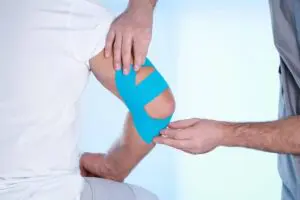
Tendinitis Treatment Brisbane (tendinopathy)

Shoulder Pain Brisbane, Managing your shoulder pain
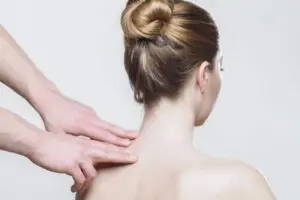
Thoracic Outlet Syndrome Brisbane
Links
https://www.healthdirect.gov.au/carpal-tunnel-syndrome
https://www.jospt.org/doi/10.2519/jospt.2017.0503
https://www.mayoclinic.org/diseases-conditions/carpal-tunnel-syndrome/symptoms-causes/syc-20355603
https://orthoinfo.aaos.org/en/diseases–conditions/carpal-tunnel-syndrome/
https://my.clevelandclinic.org/health/diseases/4005-carpal-tunnel-syndrome
https://www.rheumatology.org/I-Am-A/Patient-Caregiver/Diseases-Conditions/Carpal-Tunnel-Syndrome
References
https://www.ncbi.nlm.nih.gov/pmc/articles/PMC5101096/
https://www.researchgate.net/profile/Jason_Goodson/publication/264127100_Occupational_and_Biopsychosocial_Risk_Factors_for_Carpal_Tunnel_Syndrome/links/54874ed40cf2ef34478ec732.pdf
https://www.semanticscholar.org/paper/MECHANISMS-OF-LOW-LEVEL-LIGHT-THERAPY-Hamblin/a31ed689c69628783abc7d26e82ca4cdcfd78610
http://photobiology.info/Hamblin.html
https://d1wqtxts1xzle7.cloudfront.net/74607802/c512eca2a7b12162f7380395d6bdf2edd91b-libre.pdf?1636798233=&response-content-disposition=inline%3B+filename%3DIncreased_Forward_Head_Posture_and_Restr.pdf&Expires=1646195776&Signature=e~z-susBcGTrLcPr9xOUeDJI4~9RnwoXEZ6YYPAGc16k8ubrYoOG8hgR7arRvo1MsLqLvKqFUjd5mmRcYaw0-dNTagdFpClHmzZJt5stybpq823wJQsy9Q9tMBSAeov1Xmm7nROLZ5tEElJmakxjt9Op0GCEMk86dmHerAPDzCsN7riuateT7V2wrqd2uQ4HVQBOqfvsehMJ9omH4SljtuClNEtuuXRtPE3I-4neq8wow6MaAJJl7j~tZ~46q5ETGmDiPjVW38-edyCP~d3c28QFIV~AcUOdqpynt7z8HO4F5n8ibHAam8EzY0R1X4gyM8W06OgzHGOJNHlnmYGseA__&Key-Pair-Id=APKAJLOHF5GGSLRBV4ZA
https://www.jospt.org/doi/full/10.2519/jospt.2011.3536
https://www.researchgate.net/profile/Ibrahim-Abu-Amer/publication/51661271_The_efficacy_of_forward_head_correction_on_nerve_root_function_and_pain_in_cervical_spondylotic_radiculopathy_A_randomized_trial/links/551bdcf20cf20d5fbde21aa1/The-efficacy-of-forward-head-correction-on-nerve-root-function-and-pain-in-cervical-spondylotic-radiculopathy-A-randomized-trial.pdf
https://www.jpma.org.pk/PdfDownload/9478
https://www.ncbi.nlm.nih.gov/pmc/articles/PMC6726975/
http://www.gympiemassage-rehab.com/uploads/1/0/3/8/103813926/cts_elliott_and_burkett_1.pdf
https://d1wqtxts1xzle7.cloudfront.net/45755865/Response_of_pain_intensity_to_soft_tissu20160518-11243-qhpd4b-with-cover-page-v2.pdf?Expires=1646196510&Signature=KZN~K739rgAtWc8eQkC37Du2r55tzdJP0hO9qYMv0zZ1a9n~JQ3~MDzrELekfA0QA4eY2zllXqobHo-Wsy77fWDNvxn6UGDn43lO9zEEJ~j238r-JTALmpJ064RChLOZCsQ8XdBspfIkuo-4XNT5W76Me61AC-FwLC7aTzt69TgxJwoGIfhpErdC26quBfuegeKATMSff6~ho~T4jssu0d3Juh7SqnokFeC1~lCElPoxuCrHZqzM~6Y0TrC3kGqCsp9XMwWD-YynD2j~Kcdrk0F1FC7u6j6OK7eeO2sNGLrKejwkr7WvT~jizj2Qf2-HwpvWyBZfJkfq2DW1bDyUmA__&Key-Pair-Id=APKAJLOHF5GGSLRBV4ZA
https://www.researchgate.net/profile/Andrea_Klauser/publication/259958102_Carpal_Tunnel_Syndrome_Diagnosis_by_Means_of_Median_Nerve_Elasticity-Improved_Diagnostic_Accuracy_of_US_with_Sonoelastography/links/0046352ef506a4f0b5000000.pdf

Roger Morelli


Latest posts by Roger Morelli (see all)
- Lymphatic Drainage Massage Benefits - October 18th, 2024
- Lymphatic Compression Pump Therapy Brisbane - October 16th, 2024
- Lymphoedema Brisbane - October 14th, 2024

